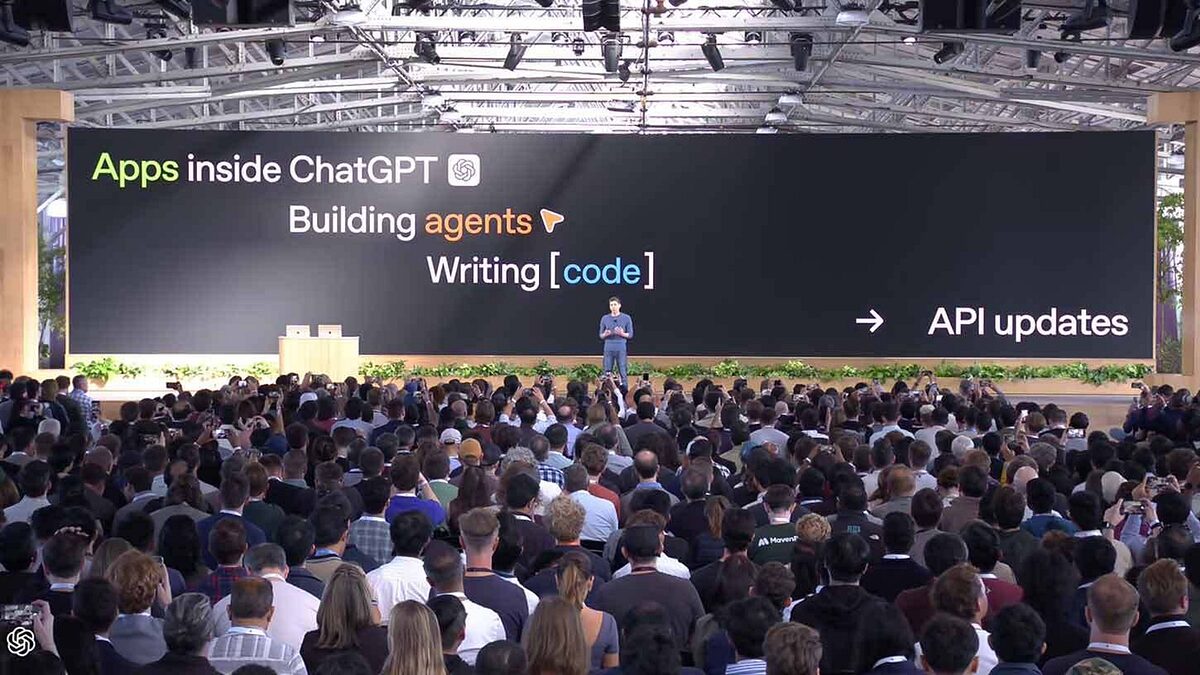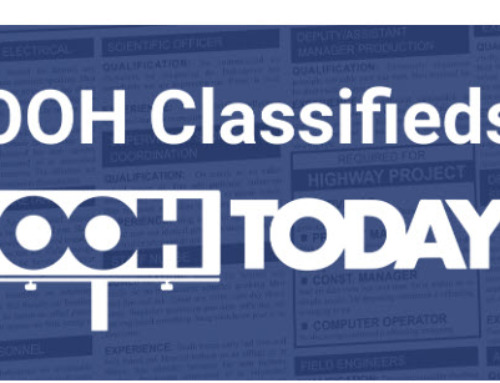What brands need to know about OpenAI’s Dev Day 2025 event 
Upon the heels of releasing Sora and stirring up an AI video franzy, OpenAI hosted a Dev Day 2025 event on Monday and unleashed a number of new products and updates. The key announcement that grabbed major press attention was the addition of app integrations directly in ChatGPT, which allows users to simply chat for what they want instead of opening the various apps.
This points to OpenAI’s ambition of becoming a platform that could end up eating parts of, if not most of, the app economy, which is corroborated by the other developer-oriented products that OpenAI also launched, such as AgentKit, a toolkit for building and deploying AI agents, and the Apps SDK that will enable developers build apps for ChatGPT.
For brands, if OpenAI succeeds in making ChatGPT the primary channel for people to interact with digital services and make purchases, as we currently do via apps and the web, it would further alter how brands will need to show up for the chatbot-addled consumers.
Let’s take a deep look into what ChatGPT’s app integration might mean for the future of brand interactions.
How Apps Work Within ChatGPT
A new generation of apps has arrived in ChatGPT, aiming to transform it from a conversational assistant into a full interactive platform. Evolving beyond the previous generation of app plug-ins, this new wave of apps promises to bring a more integrated app experience to ChatGPT. At launch, all logged-in users outside of the EU can access apps made by Booking.com, Canva, Coursera, Figma, Expedia, Spotify, and Zillow, allowing users to ask things like “Zillow, show me some one-bedroom apartments available for rent in my neighbourhood,” or “Spotify, create a new playlist for my boyfriend’s upcoming birthday party.” The goal is for these apps to feel like an organic part of your dialogue, without having to move over to the corresponding apps for results and further refine the search.
OpenAI said that more “pilot partners” for ChatGPT apps will be added later this year and it expects to make apps available to EU users soon. Further down the road, OpenAI also aims to enable all developers, not just its partners, to build apps for ChatGPT via a “Apps SDK” it previewed on Monday. The SDK is built on the Model Context Protocol (MCP), an open standard that allows ChatGPT to connect safely to external tools and data. OpenAI said it would begin accepting app submissions later this year, giving developing access to ChatGPT’s over 800 million-and-growing weekly active users.
Looking ahead, OpenAI plans to expand apps to enterprise and educational markets, while launching a public directory where users can browse and discover new apps. Developers will also gain new monetization options and the ability to enable instant checkout by using the Agentic Commerce Protocol. OpenAI also teased that new partners including the likes of Uber, Target, AllTrails, Peloton, and OpenTable, will soon be joining ChatGPT, continuing to broaden what’s possible with chat-based apps.

In addition, OpenAI launched two more developer kits: First up is AgentKit, a toolkit for building and deploying AI agents, including Agent Builder, which Sam Altman described as like Canva for building agents. Second, striking while the iron is hot, the company opened access to the Sora 2 video model via the Sora API.
Overall, the introduction of apps in ChatGPT marks OpenAI’s most ambitious platform play to date. Some analysts noted parallels with Facebook’s 2007 efforts to become a platform via social graph, while others, such as Ben Thompson, went further back to suggest it is a strategic move akin to how Microsoft secured the enterprise computer market in the 80s with DOC, and later in the PC market with Windows, noting that:
This is a push to make ChatGPT the operating system of the future. Apps won’t be on your phone or in a browser; they’ll be in ChatGPT, and if they aren’t, they simply will not exist for ChatGPT users. That, by extension, means the burden of making these integrations work — and those conversions performant — will be on third party developers, not OpenAI. This is the power that comes from owning users, and OpenAI is flexing that power in a major way.
If this works, it will allow OpenAI to do an end-run around their chips partner NVIDIA to take control of the AI market (just as Microsoft did with their partner IBM, and to a degree, Intel). To make the parallel even more fun, as tech analyst M.G. Siegler notes, the Apple foil in this analogy would be Google, with their fully integrated AI play. This is a big move that could, down the road, upend the big tech landscape as we know it. Yet, one simple question remains.
Will OpenAI’s Platform Dream Come True?
Whether ChatGPT can truly become the next great platform will depend on how natural and useful the chatbot interface feels for everyday digital interactions. At its current incarnation, that usefulness seems to vary case by case. Sure, a chat-based UI may indeed prove superior for certain tasks, such as quickly checking flight updates or summarizing the latest celebrity gossip. But for more complex tasks that involve multiple variables, detailed browsing, or visual comparison, such as booking multi-leg trips or shopping for furniture, the traditional app experience still holds an edge in comparison. As voice assistants and chatbots have proven time and time again, conversations, spoken or written, cannot replace every non-chat interface, at least not yet.
In addition, consumer habits also pose a hurdle. Many users, particularly older millennials and Gen X shoppers, remain anchored to desktops and laptops when making major purchases. The tactile reassurance of a larger screen and more visual context is hard to replicate in a chat bubble. OpenAI’s challenge will be to prove that conversational commerce can be just as efficient and trustworthy as browsing a website or using a native app.
Then there’s the device question, which might be a bigger factor. Smartphones, designed for touch and visuals, are the perfect hardware for using apps on the go. But, as we have recently witnessed with Meta Display Glasses, AI glasses and other AI-native wearables might be on the horizon, and apps are not made for those devices. Chatbot apps, on the other hand, could agilely respond to user’s needs and pull in information and digital services as needed, which makes them better suited for AI wearables where the the key interactions are based on contextual prompts.
In that sense, OpenAI’s app integrations and developer toolkits aren’t just about improving ChatGPT’s utility today; they’re a forward-looking bet on a post-mobile future. The company appears to be laying the groundwork for an ecosystem where AI-first devices rely on conversational agents to mediate between users and digital services. If that future materializes — and that’s a big if, considering the current state of AI wearables — ChatGPT might just become the new OS layer that all brands must filter through to get to their audiences.
What Does This Mean for Brand Marketers
Seen through this lens, OpenAI’s app integrations and developer toolkits are less about competing within the current mobile paradigm and more about preparing for the next one. By embedding an ecosystem of chat-based experiences into ChatGPT now, OpenAI is positioning itself at the center of a post-mobile, AI-first interface layer, one where conversational access becomes the default way to interact with brands, services, and commerce.
The brands that will thrive in this new ecosystem are those that treat AI chat as a branded touchpoint and design experiences that feel conversational and contextual. By creating bespoke chat-based experiences, whether through OpenAI’s forthcoming App SDK, or by training brand-specific agents, brands can design chat interactions that feel more human, responsive, and emotionally intelligent. Whether it’s a fashion brand helping a user refine their personal style, or a travel company curating itineraries in real time, brands can and should start considering how they show up in a chat-first world today.
Sam Altman’s recent revelation that over four million developers have already built with OpenAI, and that the API handles more than six billion tokens per minute, underscores the scale of its platform ambition. Ultimately, whether people will want to chat with their apps depends on whether OpenAI can make that conversation useful, frictionless, and trustworthy for the fast-approaching post-mobile era.
Apps in ChatGPT & OpenAI’s Platform Dream was originally published in IPG Media Lab on Medium, where people are continuing the conversation by highlighting and responding to this story.




